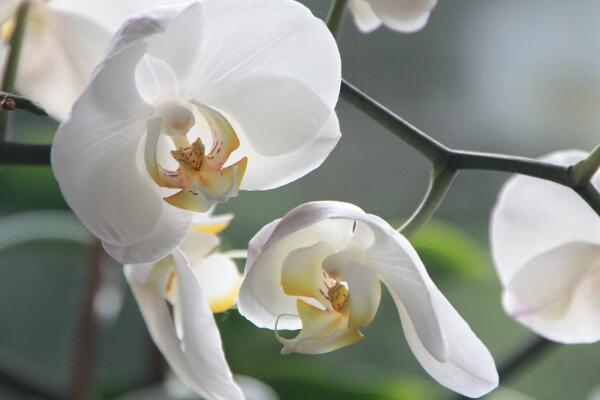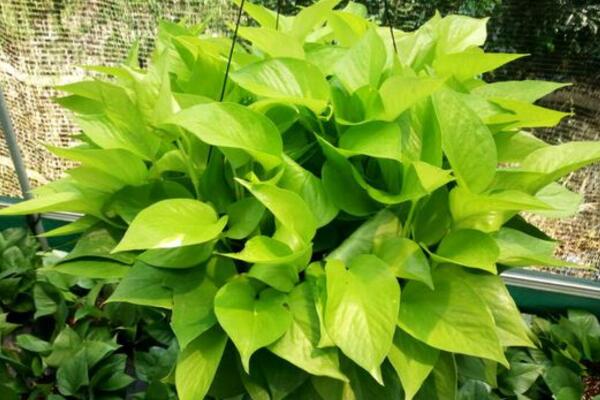How to plant the seeds of orchids? How do you raise it? How often is it watered?
Orchids are epiphytic or terrestrial herbs. Orchids in traditional Chinese flowers only refer to several species of orchids distributed in Chinese orchids, such as Chunlan, Huilan, Jianlan, Cymbidium and Hanlan, etc., so how to plant its seeds? How do you raise it? How often do you water it? It is reported that orchids are generally watered every 2-3 days or a small amount every day from March to April, once a day from May to June, once a day in the evening from July to September, once a day from October to November, and once a day in March of the following year from December to March. If you want to pour a lot of water at once in winter, you can pour it on cloudy and rainy days to prevent frost damage; because it will become ice if it is not watered in cloudy and rainy days. This is the law of watering in the Yangtze River basin. But each region has its own watering habits.

How to plant the seeds of orchids?
The main results are as follows: 1. Orchid seed sowing can be divided into two ways: bacterial sowing and aseptic sowing.
Aseptic sowing is to sow seeds in a test tube or glass bottle containing a proprietary medium. This method requires the preparation of high culture medium, sterilization of seeds, and high requirements of temperature and humidity control. Even after sprouting, higher ecological conditions and management techniques are needed. Generally speaking, most enthusiasts do not have the conditions to adopt aseptic sowing and reproduction.
2. The orchid seed is very fine, there is only one underdeveloped embryo in the seed, the germination power is very low, and the seed coat is not easy to absorb water, so it can not germinate by conventional sowing, so it needs to use orchid or artificial medium to supply nutrients before it can germinate.
3. Sowing it is best to choose the uncracked fruit, after the surface is sterilized with 75% alcohol, take out the seed, soak it with 10% sodium hypochlorite for 5-10 minutes, take out and rinse it with sterile water for 3 times, then sow it in the culture bottle containing the culture medium, then place it in the dark culture room, keep the temperature about 25 ℃, germinate and then move to the light to form the protocorm. It takes half a year to a year from sowing to transplanting. Tissue culture has been successful, and this method can be used to propagate where possible.
How to grow orchids?
1. The first thing to pay attention to is the place where orchids are cultivated. Different places will directly affect the growth and development of orchids. Orchids can be placed in the open air in spring, summer and autumn, and indoors in winter. It is best to be open and moist outside. There should be plenty of light indoors. In this way, it is beneficial for orchids to grow. The orchid basin had better be put on the wooden frame or table, not on the ground.
2. There are many varieties of orchids, most of which are afraid of direct sunlight, so we should pay attention to proper shading. Orchids can shine more sunshine to promote their growth in the first and middle of April. It should be properly shaded after late April. From June to September, shade should be taken early every day. After October, the weather begins to turn cool, and the sun is weak, which can postpone sheltering vegetables, but we still need to pay attention to shading work around noon.
3. Orchids can be caught in a light rain, but pay attention to avoid mildew, showers or continuous rain.
4. Raising orchids and watering is also very important. When the leaf buds of orchids extend about 1.5 cm from June to July, thin and rotten liquid fertilizer can be applied 1-2 times (chemical fertilizer is not suitable). From August to September, 1-2 times of mature and thin liquid fertilizer were applied. The plant ash extract of vegetarian orchids can be applied for 1-2 times, and the effect is very good. The best time to fertilize is in the evening, and water again the next morning.
5, breeding orchids should pay attention to sterilization treatment, generally in the hot sun exposure, so as to prevent the occurrence of diseases. In order to prevent the occurrence of orchid diseases, we should not only properly control the drying and humidity of the potted soil, but also use more mud pots and less glazed pots in the selection of flowerpots. Especially for orchids newly dug from the mountains with poor growth, they must be planted in mud pots. This makes the pot soil easy to dry, can promote the growth of orchids and reduce the incidence of disease.
Time: 2019-04-11 Click:
- Prev

How long does it take a rose from seed to blossom? What month does it open? How do you raise it?
Rose, also known as lingering flowers, assassins, heart-piercing roses, is a shrub of the genus Rosaceae native to China and is widely planted everywhere. Do you know how long it takes from seed to flowering? What month does it open? How to raise it? According to Rosaceae data, the rose florescence is from April to May. Let's explain here that the rose we're talking about now
- Next

How do you grow green pineapple? How often do you water it? How to grow fast and thick?
Green pineapple belongs to the unicorn leaf plant, large evergreen vine, with ornamental value and Jinhua air function. So how does it grow? How often do you water it? How can you grow up quickly and thickly? According to Li Jiahui, a flower farmer, the roots of green pineapple prefer a moderately humid environment. The relative humidity of leaves should be above 60%.
Related
- Fuxing push coffee new agricultural production and marketing class: lack of small-scale processing plants
- Jujube rice field leisure farm deep ploughing Yilan for five years to create a space for organic food and play
- Nongyu Farm-A trial of organic papaya for brave women with advanced technology
- Four points for attention in the prevention and control of diseases and insect pests of edible fungi
- How to add nutrient solution to Edible Fungi
- Is there any good way to control edible fungus mites?
- Open Inoculation Technology of Edible Fungi
- Is there any clever way to use fertilizer for edible fungus in winter?
- What agents are used to kill the pathogens of edible fungi in the mushroom shed?
- Rapid drying of Edible Fungi

